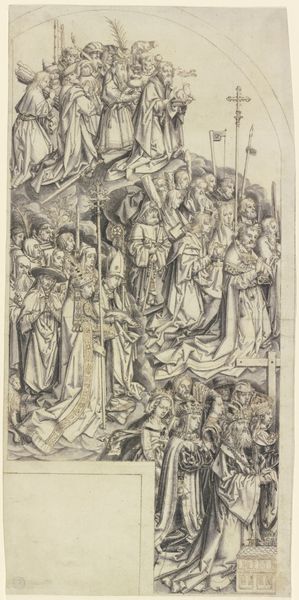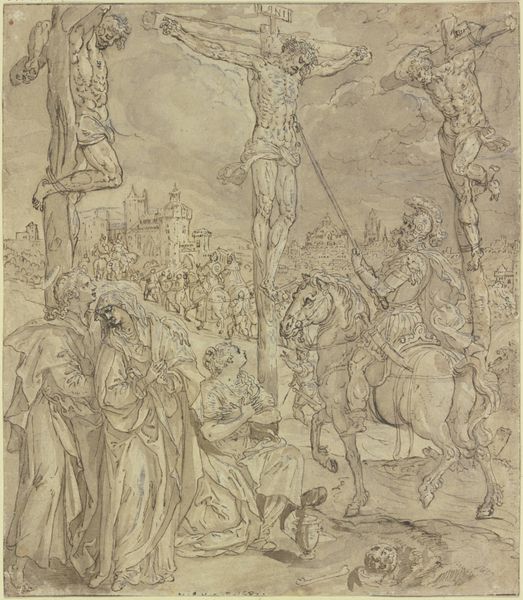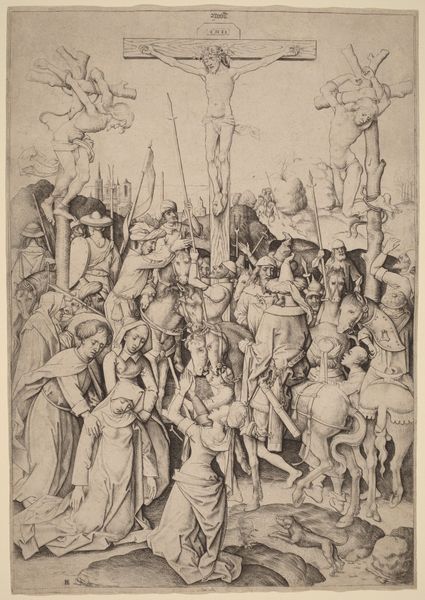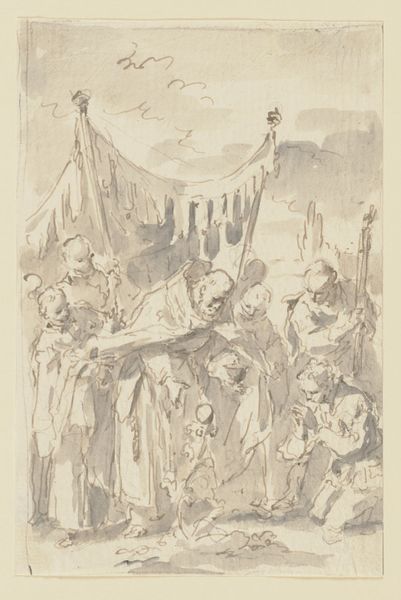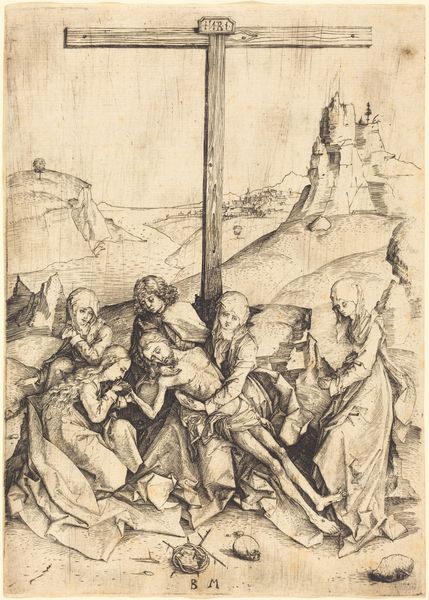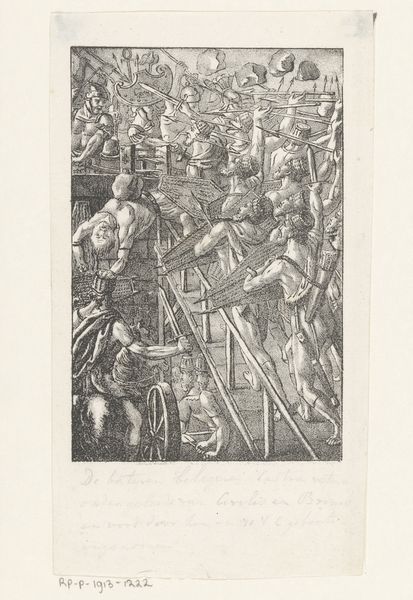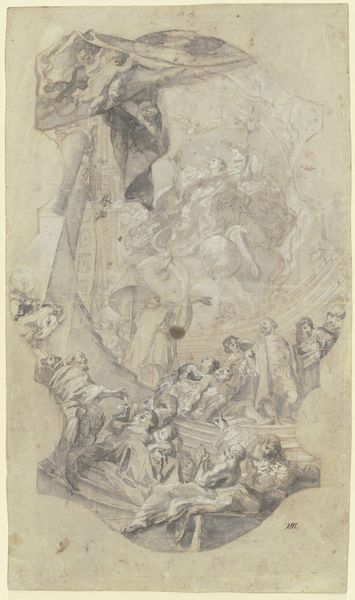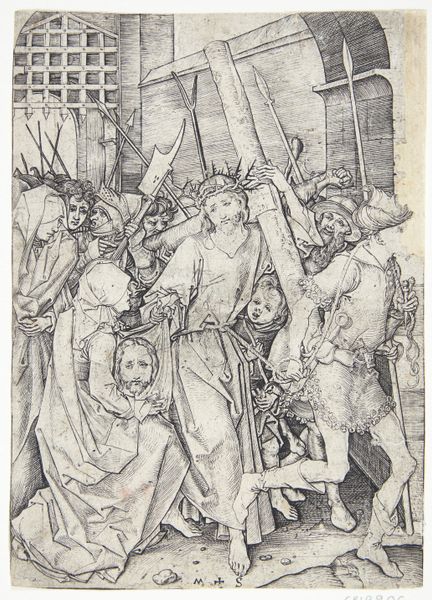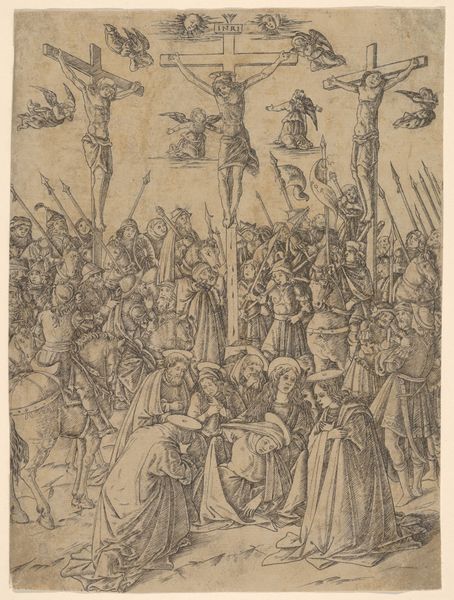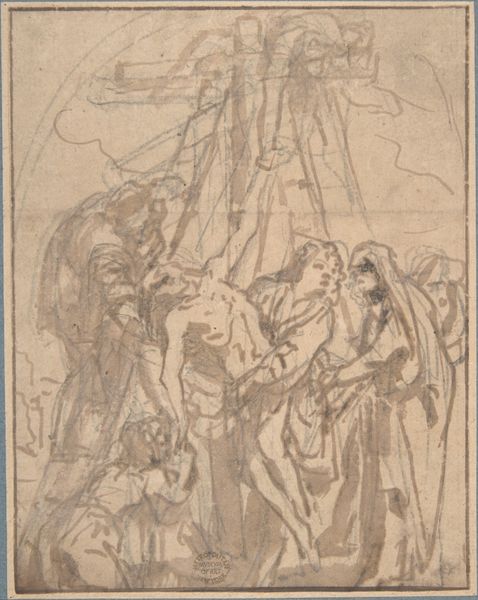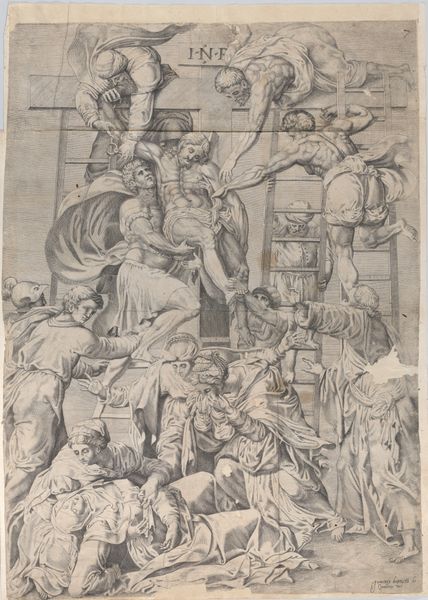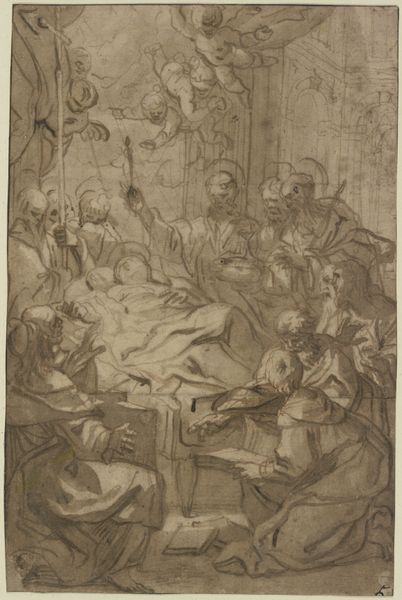
drawing, relief, paper, ink
#
drawing
#
medieval
#
narrative-art
#
relief
#
figuration
#
paper
#
ink
#
12_15th-century
#
history-painting
Copyright: Public Domain
Curator: Today, we're looking at "Bearing of the Cross," an anonymous work from around 1470 to 1500. It’s a drawing in ink on paper, housed right here at the Städel Museum. Editor: It strikes me immediately as a study in contrasts – a swirling mass of figures surrounding a central point of exhaustion. There's a deep sense of injustice palpable even in the lines. Curator: Yes, that contrast is structurally key. Observe how the artist uses tightly packed figures in the foreground to emphasize weight and compression, the lines becoming increasingly looser as the composition moves to the upper background and fades, a sort of aerial perspective conveyed simply through linework. Editor: The weight of oppression is clear—literally pressing down upon Christ, rendered so powerless under the weight of the cross, the weight of systemic power. And note the expressions of the figures jeering or unconcerned: a snapshot of societal complicity. The historical context matters. Curator: Undoubtedly. We also can observe the formal language the artist employs to evoke the emotion you describe. Consider how the jagged, almost chaotic, lines intensify the feeling of unease, particularly compared to the smoother treatment given to certain figures' clothing, thereby visually creating distance. Editor: That formal technique works, precisely because of what it tells us about power! The relative calm and order you observe in some, particularly in the higher placed figures, shows a privilege maintained through the chaos inflicted upon others. The scene mirrors real-world structures of inequality and persecution. Curator: One might also suggest, drawing on iconographic semiotics, the formal contrast allows a moment of clear interpretation for those who knew how to 'read' the codes of the time. That reading reinforced a hierarchy for those invested in its authority. Editor: Perhaps...Or perhaps even a subconscious cry of despair at a hierarchy brutally enforced? Looking through a contemporary lens forces one to question the artwork, and its reception, as a purely devotional or formal exercise. What social function did it serve then, and now? Curator: These interpretations can work together: both drawing attention to form while also asking tough questions about historical function. After all, it is the visual qualities of works that move viewers to ponder what those functions could be. Editor: I think it's an invitation to question structures of power. Its formal tension is really a reflection of something humanly ugly that continues to have deep, historic consequences.
Comments
No comments
Be the first to comment and join the conversation on the ultimate creative platform.

